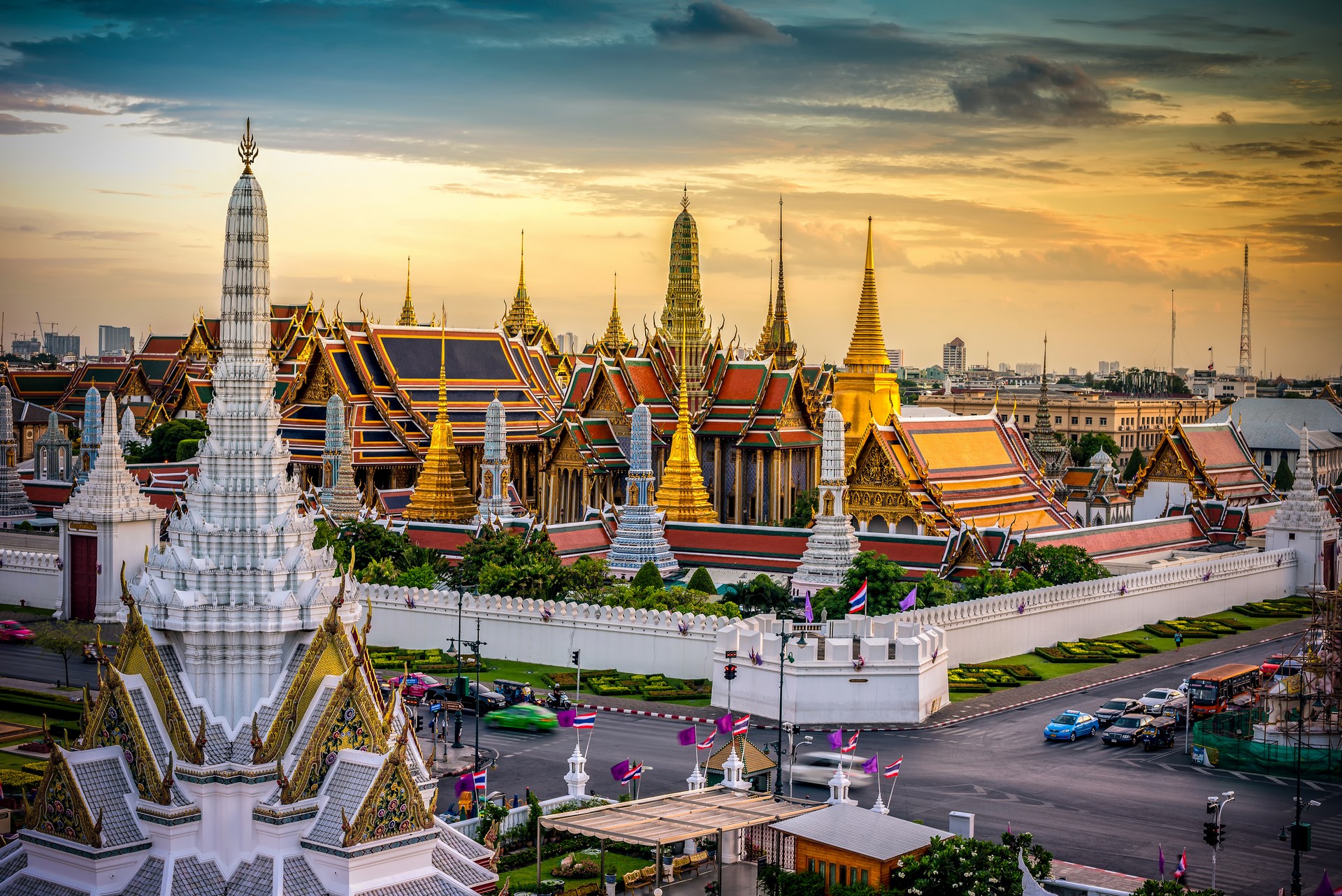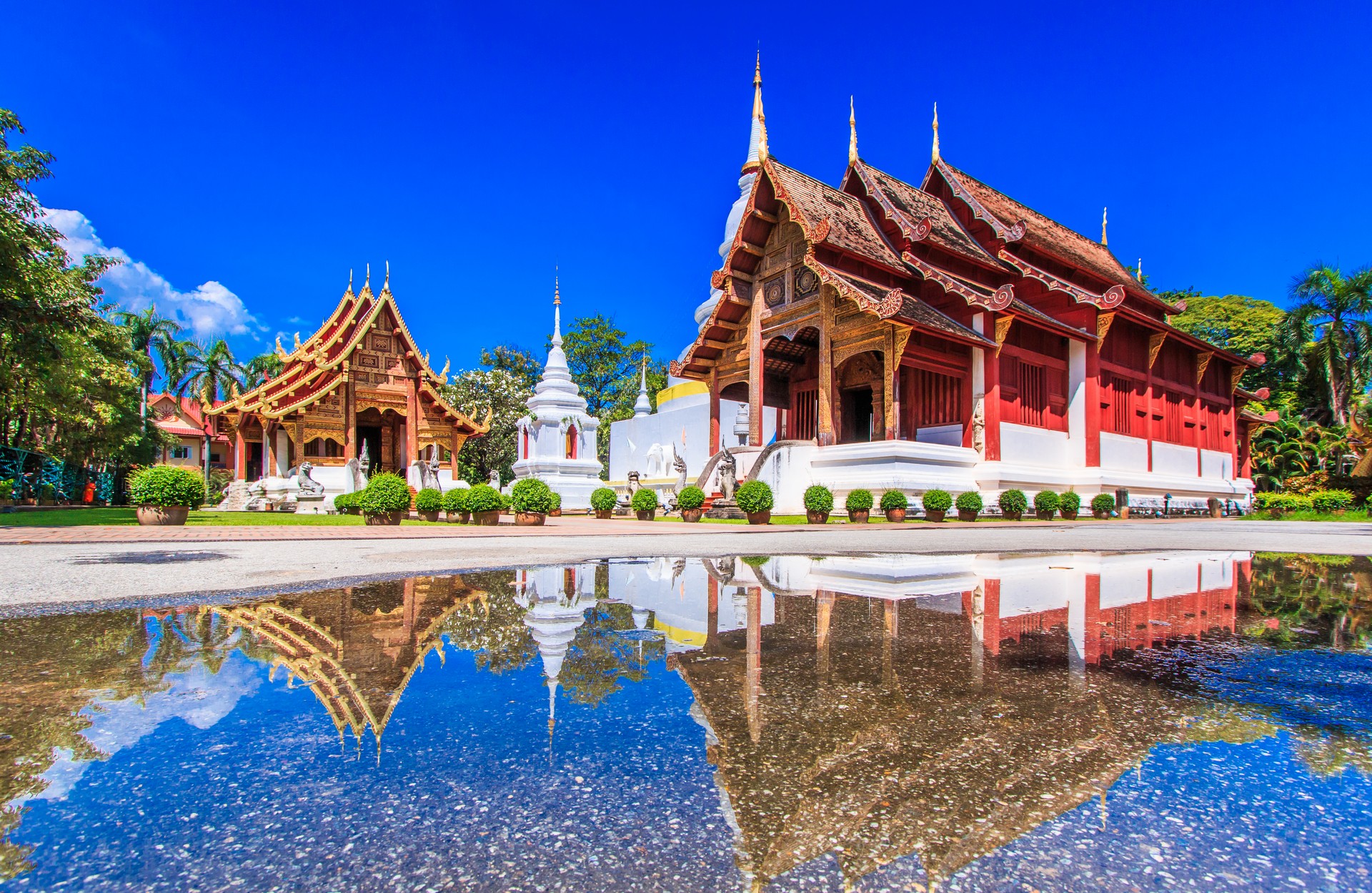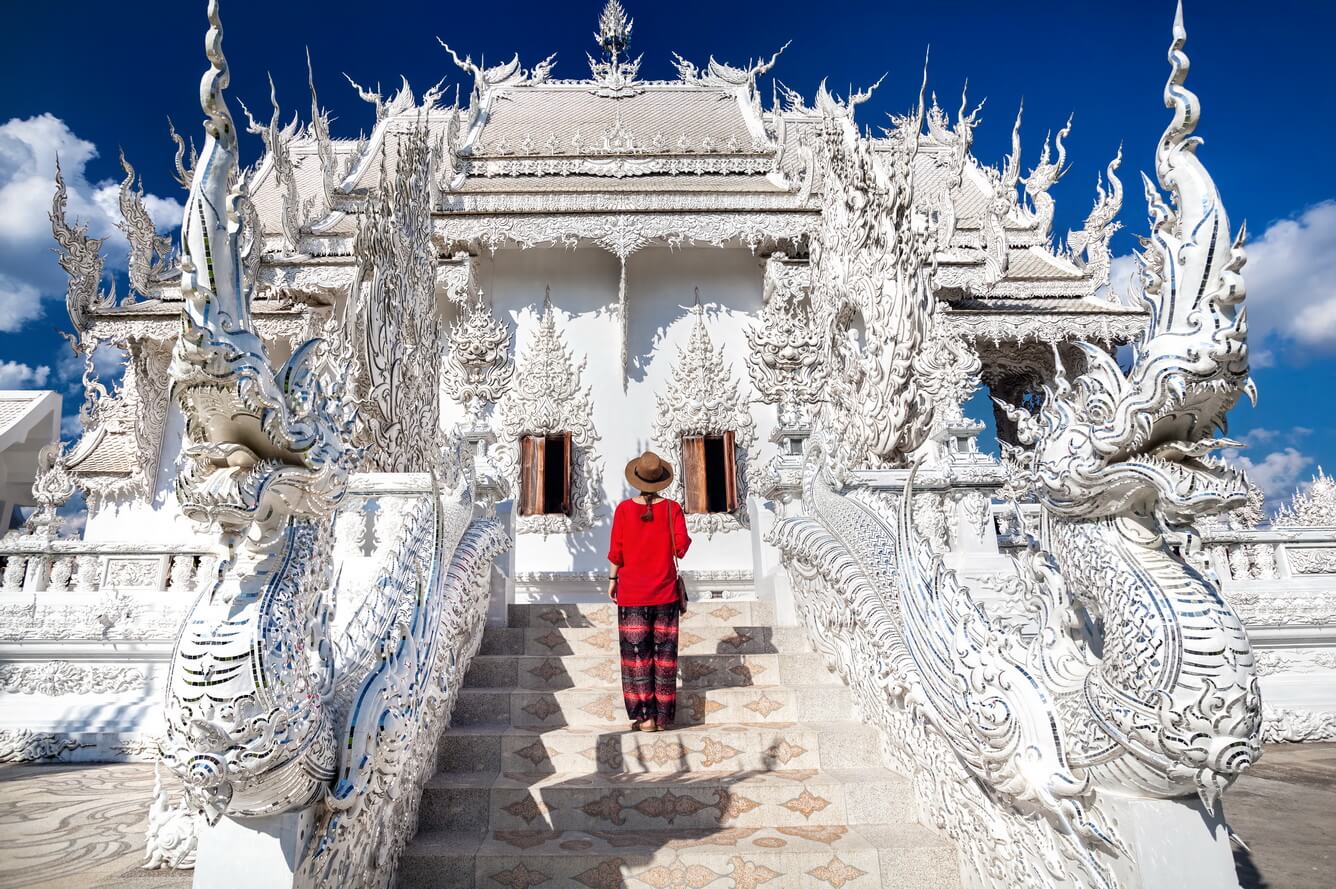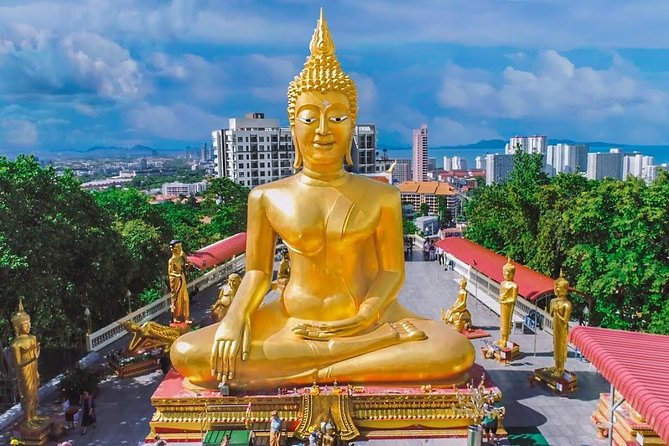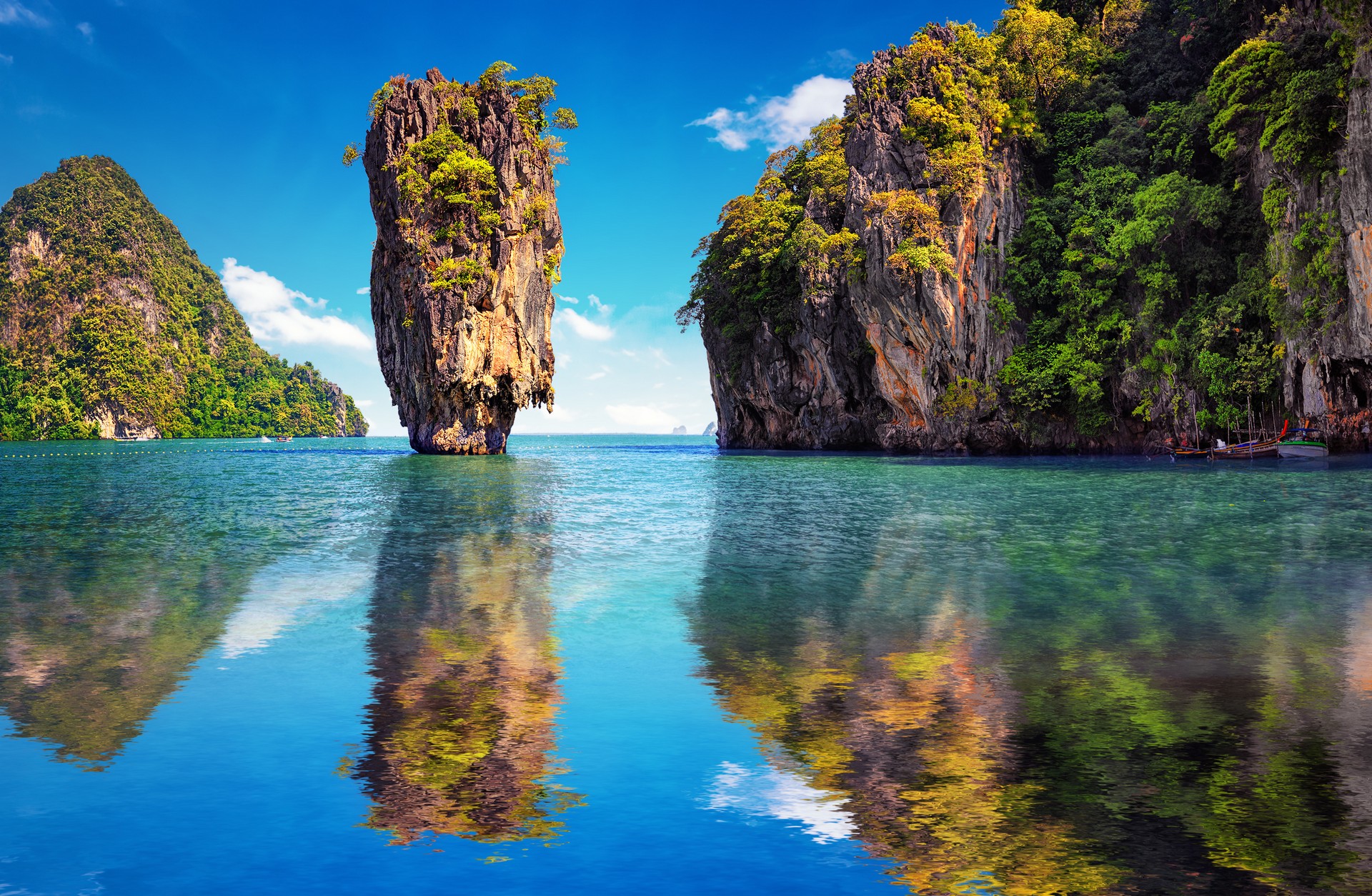THAILAND
Amazing Thailand
Thailand has a deserved reputation as one of the easiest places to travel in Asia. There’s an amazing amount to see, hassles are limited, English-language signs and menus are commonplace, and you can get around easily at almost any time of day or night.
From Bangkok and Pattaya to Phuket and Krabi; from beaches and temples to shopping, food and spas; Thailand is one of those destinations that offer a wide variety of things to do and places to see. Adorned with miles of stunning coastline, magnificent hills and mountains and spectacular scenery, Thailand is a real treat for the senses.
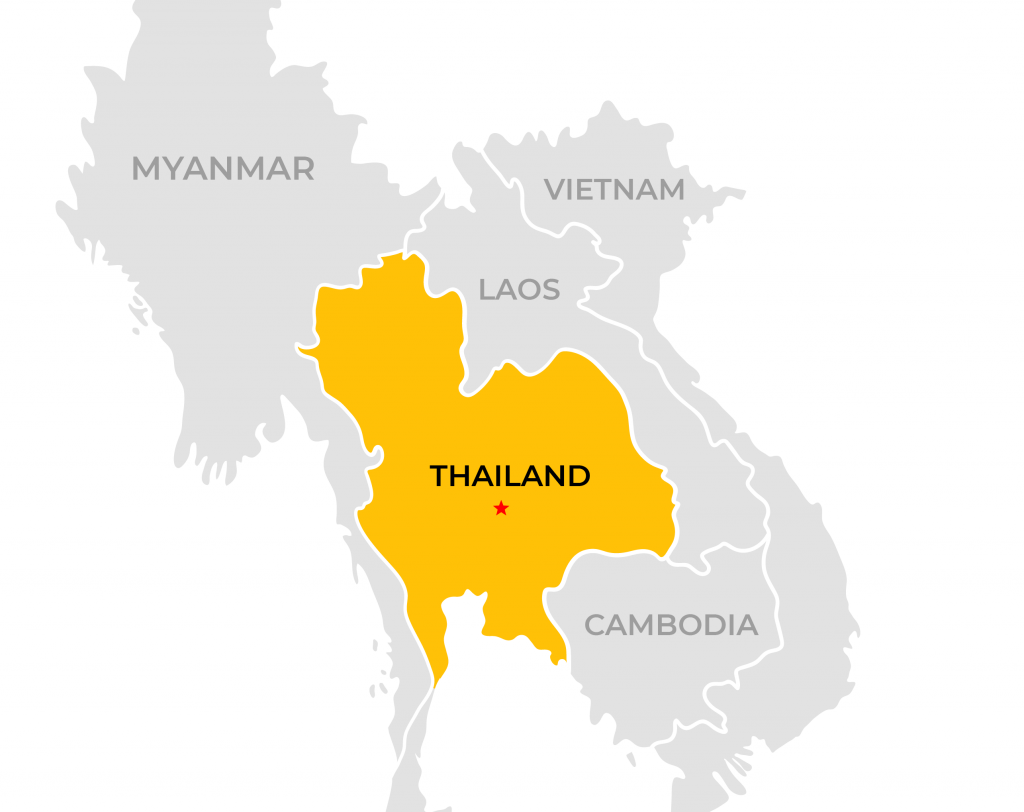
Top destinations
Top Activities
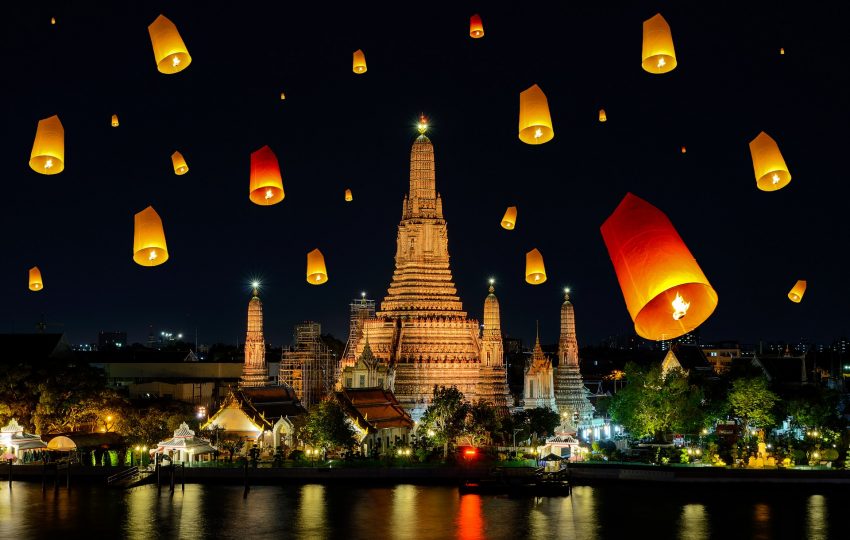
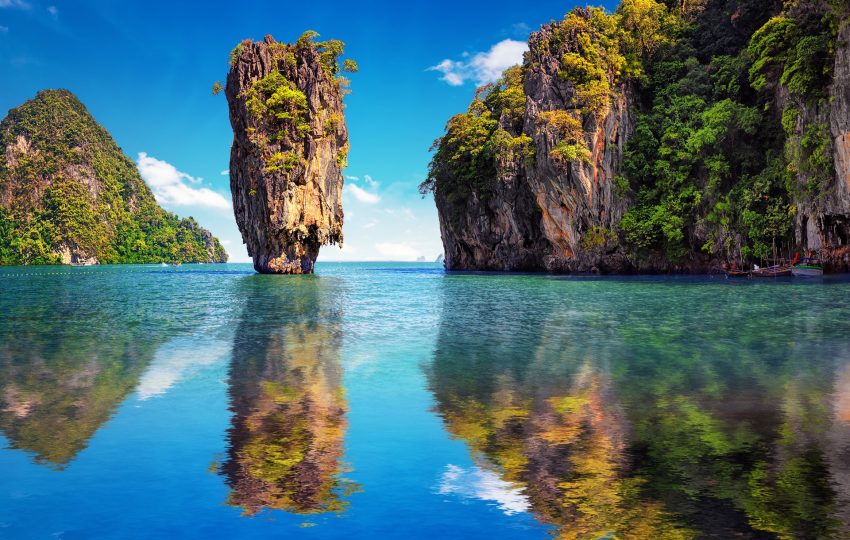
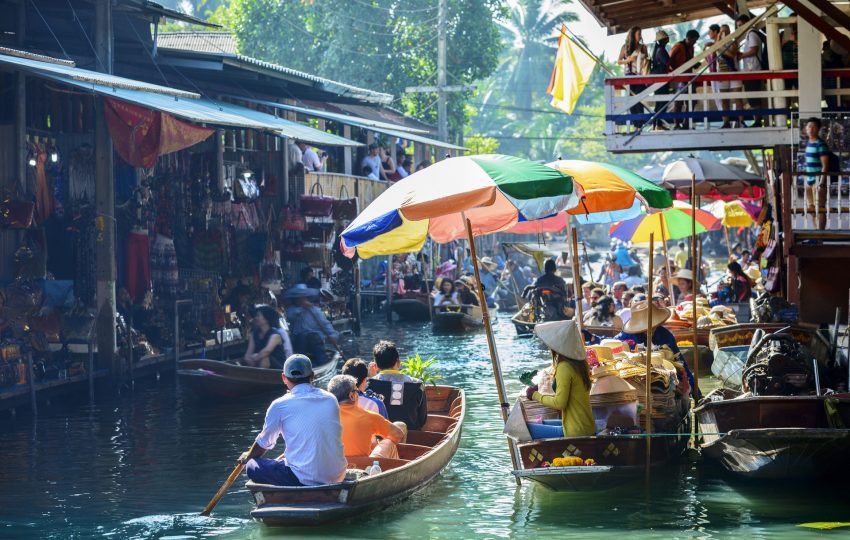
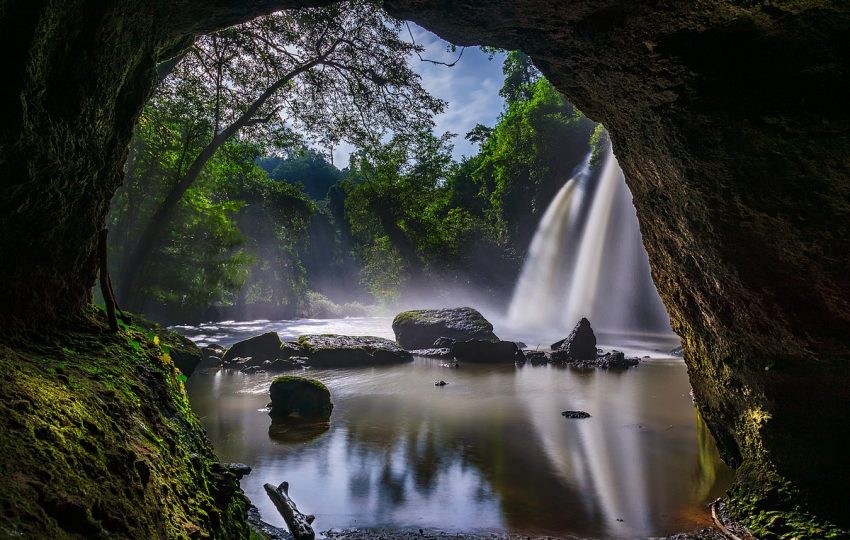
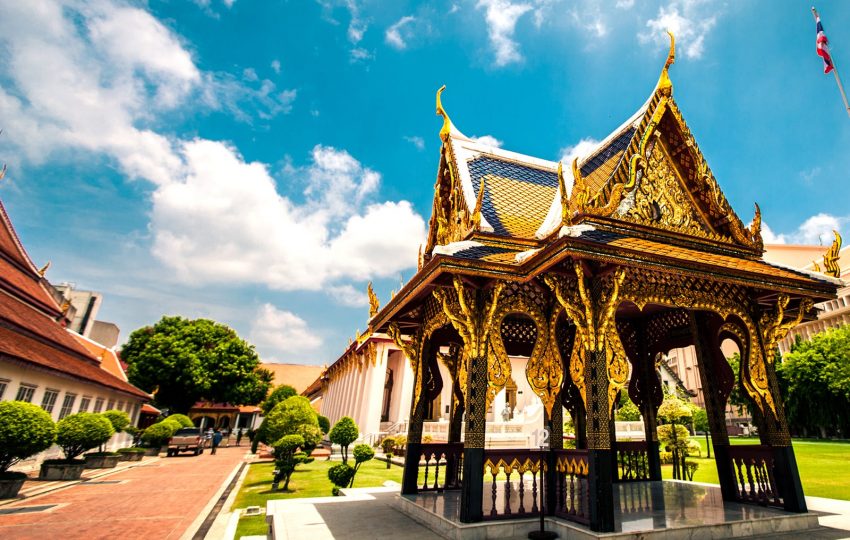
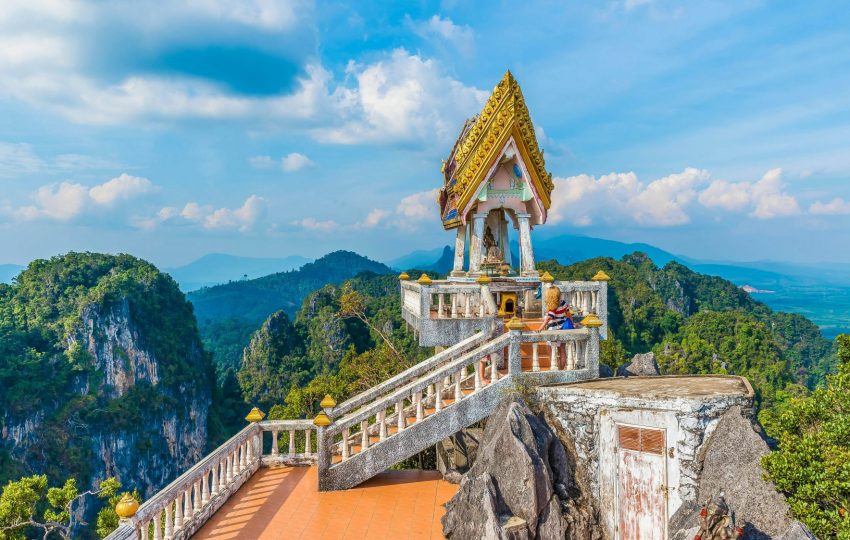
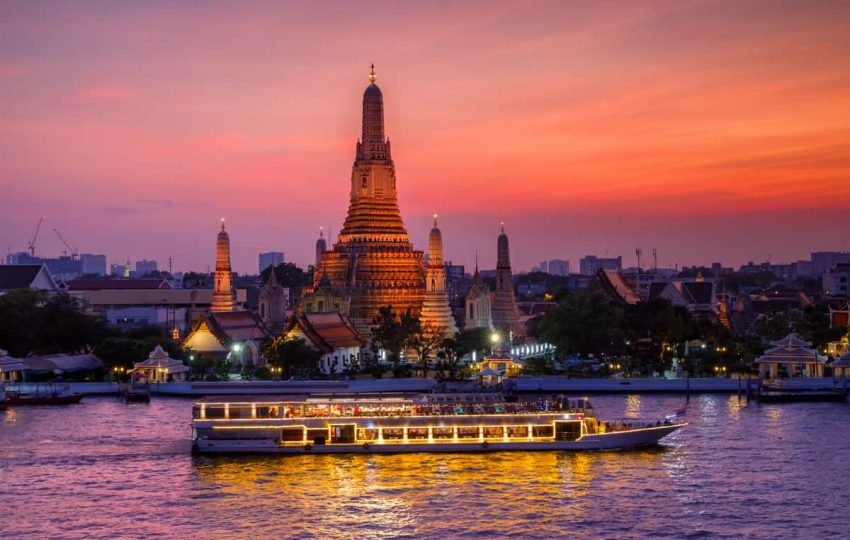
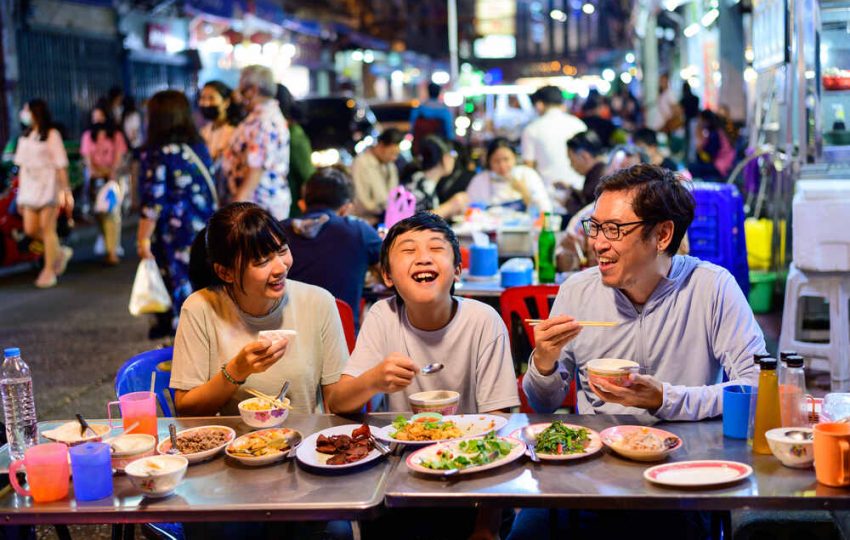
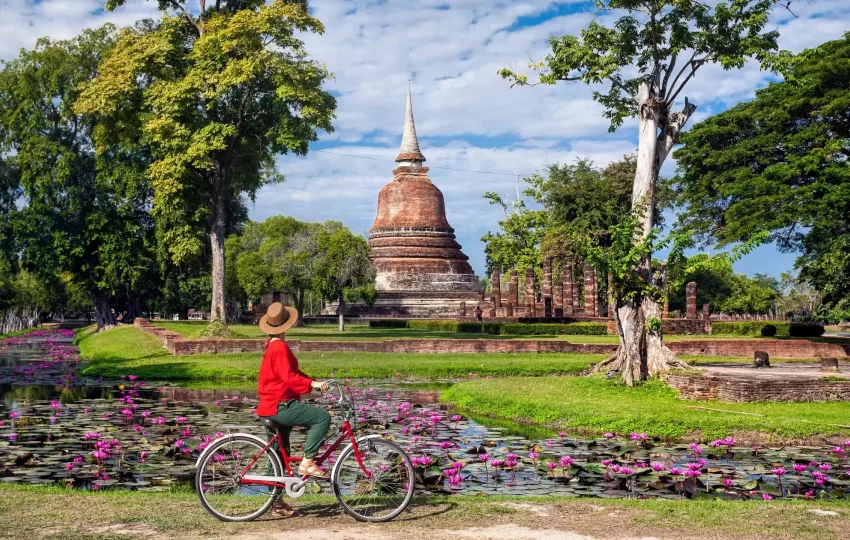
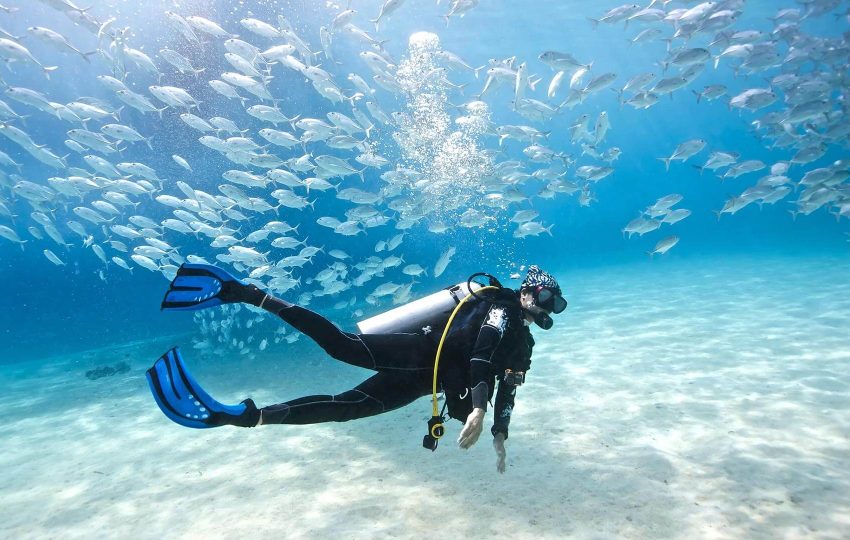
our unique tours
Thailand Travel
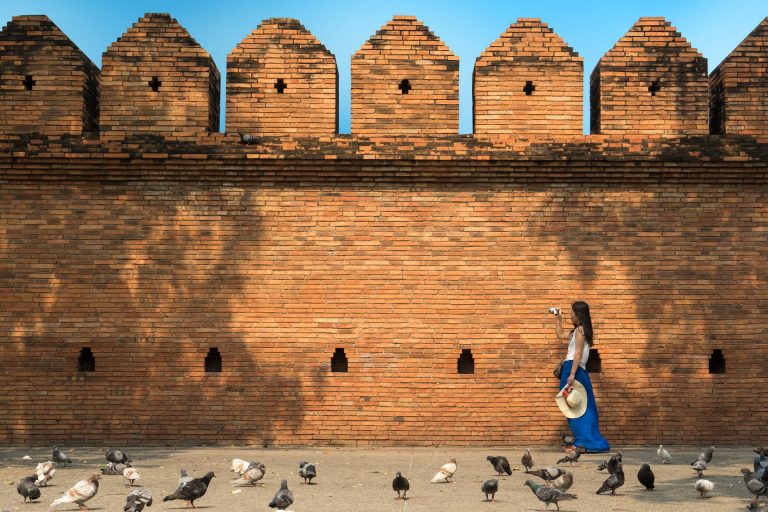
Broadly speaking, the best time to visit Thailand is during the cool and dry season, from November to early April. As well as more manageable temperatures and less rain, waterfalls are in full flow, the upland flowers are in full bloom and most activities are on offer. This is also when the bulk of Thailand’s myriad festivals are staged.
The climate of most of Thailand is governed by three seasons:
rainy season: roughly from May to October
cool season: roughly from November to February
hot season: roughly from March to May
Note that there are variations from region to region. The upland, less humid north, experiences the greatest range of temperatures: at night in the cool season the thermometer dips markedly, occasionally approaching zero on the higher slopes, and this region is often hotter than the central plains between March and May.
The northeast experiences the very worst of the hot season, with clouds of dust gathering above the parched fields, and humid air too. In southern Thailand, temperatures are more consistent throughout the year, with less variation the closer you get to the equator.
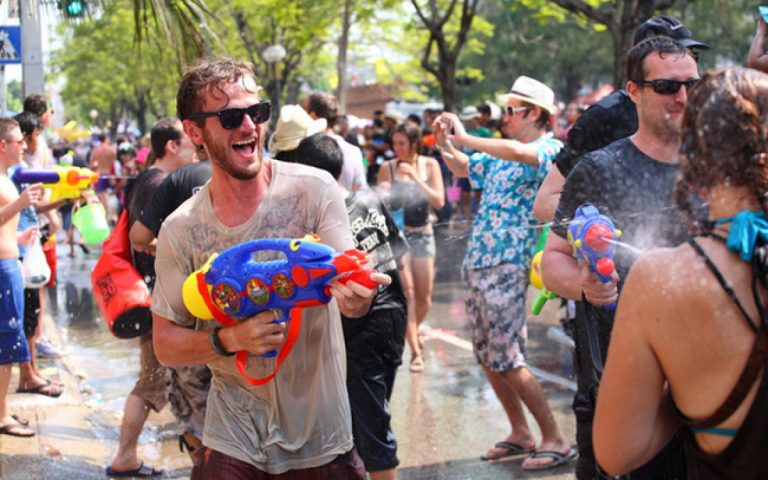
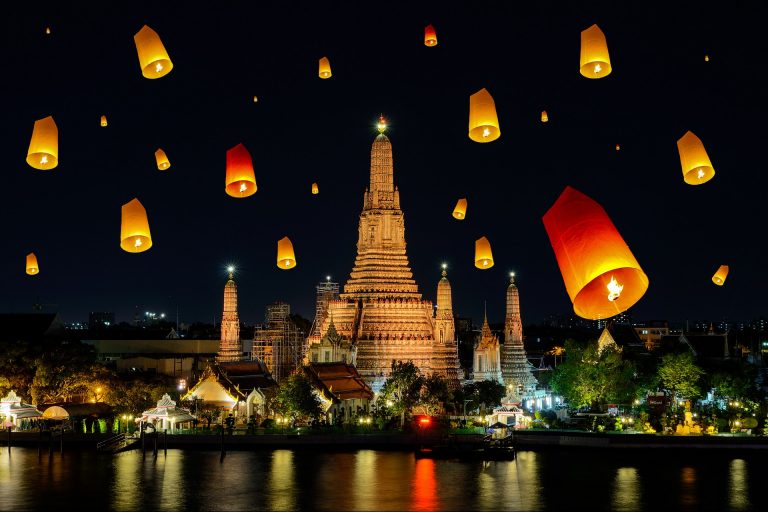
Thailand currently has seven main international airports: Bangkok (Suvarnabhumi and Don Muang), Chiang Mai, Hat Yai, Krabi, Phuket and Ko Samui. The vast majority of people travelling to Thailand fly into Suvarnabhumi Airport.
Air fares to Thailand generally depend on the season, with the highest being approximately mid-November to mid-February, when the weather is best, and in July and August to coincide with school holidays. You will need to book several months in advance to get reasonably priced tickets during these peak periods.
The cheapest way of getting to most regional Thai airports is usually to buy a flight to Bangkok and then a separate domestic ticket. However, there are dozens of potentially useful, mostly seasonal, international routes into Phuket, including direct flights with several airlines from Australia.
Most international flights into Chiang Mai, Krabi, Ko Samui and Don Muang are from Malaysia, Singapore and China (including Hong Kong and Macau). Krabi also handles seasonal, mostly charter flights from Scandinavia, while Korean Airlines from Seoul is a popular route for North American visitors into Chiang Mai Airport, which has links with Myanmar and Laos too.
Travel in Thailand is largely cheap, easy and efficient – though not always speedy. For instance, long-distance journeys on land can be arduous, especially if a tight budget means you’re sat in the unforgiving second-class seats and there’s no air con.
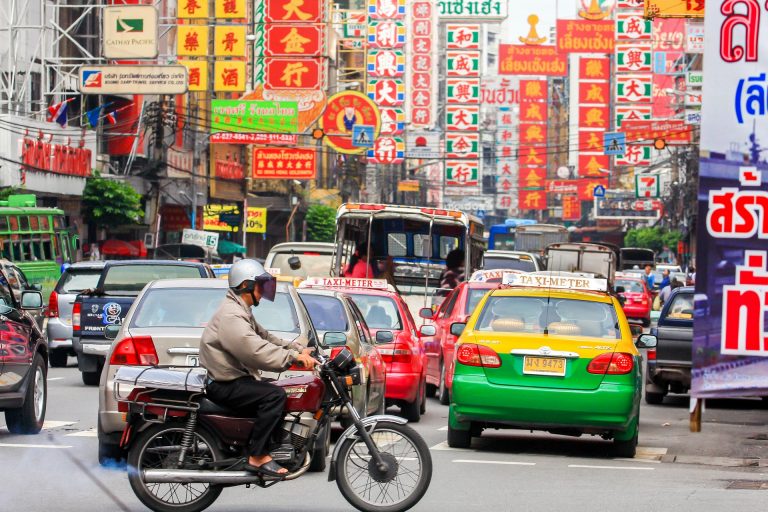
That said, the many transport options available makes getting around Thailand a whole lot easier than elsewhere in Southeast Asia. Buses are speedy, inexpensive and frequent, and can be quite luxurious.
Trains are slower, but safer and, there’s more chance to sleep during an overnight trip. It’s also worth nothing that if you’re travelling by day you’re more likely to follow a scenic route by rail than by road.
Songthaews (literally “two rows”) – open-ended vans with as many people squashed into the back as possible – supplement the bus network, especially in rural areas. Slightly more comfortable are share-taxis and air-conditioned mini-buses which connect many of the major towns and cities.
Here is our Thailand travel guide condensed into 15 unmissable Thai destinations:
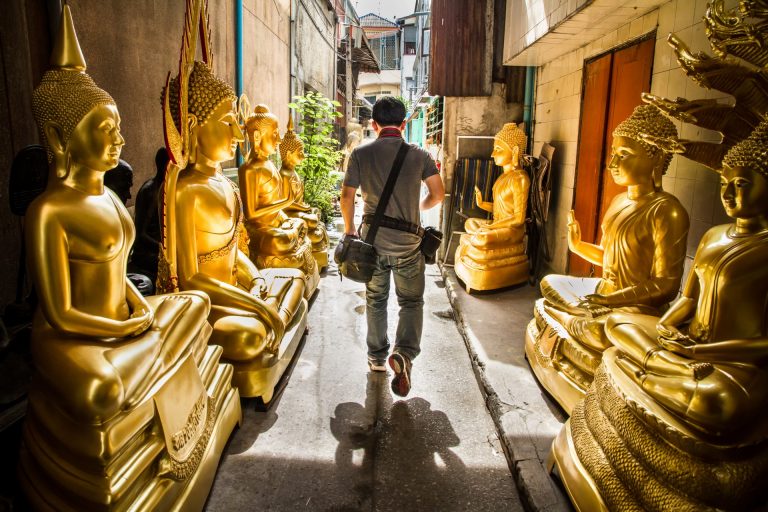
Bangkok
You could spend a year in Thailand’s capital and still not tick off all the boxes. There are a few absolute must-sees though. Start with Wat Pho, a lively and lavish temple, encompassing the awesome Reclining Buddha. Move onto the Grand Palace, which encompasses the country’s holiest and most beautiful temple, Wat Phra Kaeo. Then the markets…
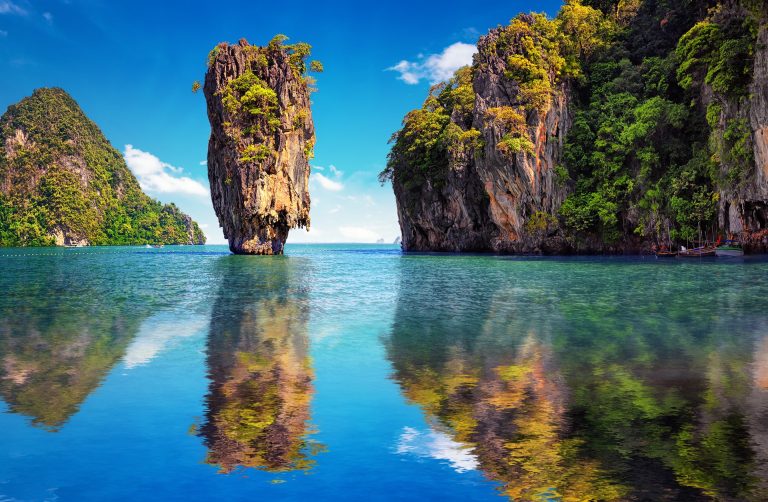
Phuket
Phuket, Thailand’s largest island, is the region’s major resort destination for families, package tourists and novice divers. Its dining, shopping and entertainment facilities are second to none. Phuket Town offers handsome Sino-Portuguese architecture and some of the most interesting sleeping, eating and drinking options on the island.
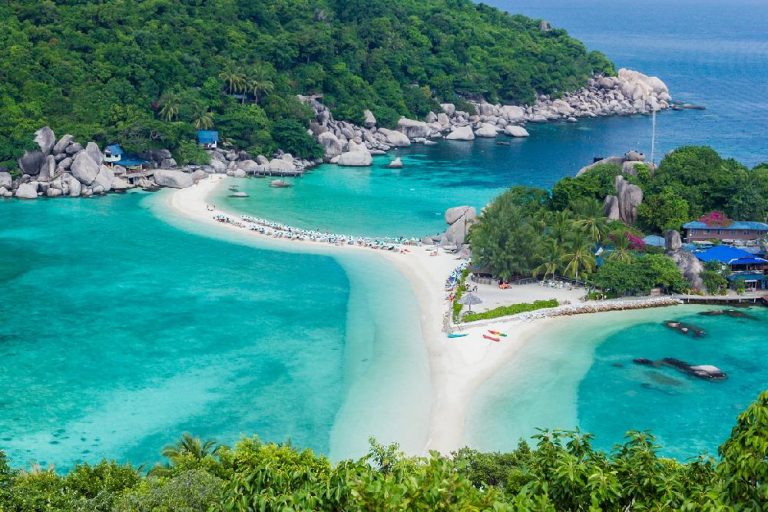
Ko Tao
The furthest inhabited island of the Samui archipelago, Ko Tao, has taken off as a scuba-diving centre, but despite a growing nightlife and restaurant scene, still has the feel of a small, rugged and isolated outcrop. A boat-trip round Ko Tao Satisfying exploration and great snorkelling, especially off the unique causeway beaches of Ko Nang Yuan.
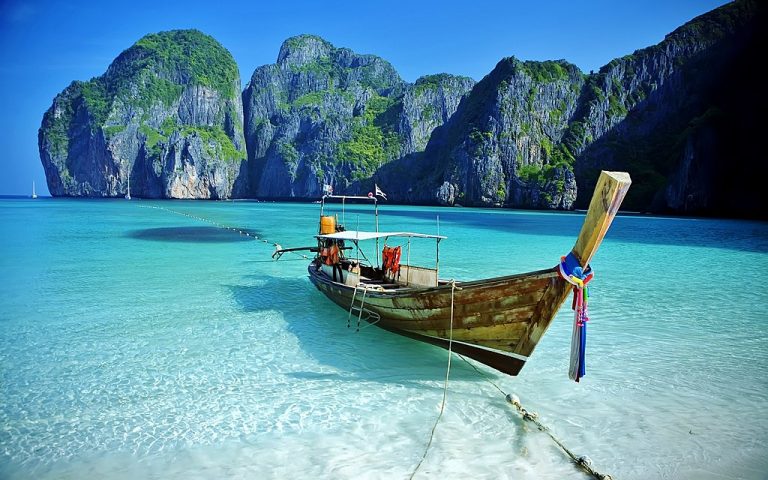
Gulf Coast
Southern Thailand’s gently undulating Gulf coast is famed above all for the Samui archipelago, three small, idyllic islands lying off the most prominent hump of the coastline. A lazy stay in a beachfront bungalow is so seductive a prospect that most people overlook the attractions of the mainland. Added to that you’ll find scenery dominated by forested mountains that rise abruptly behind the coastal strip, and a sprinkling of fascinating historic sights.
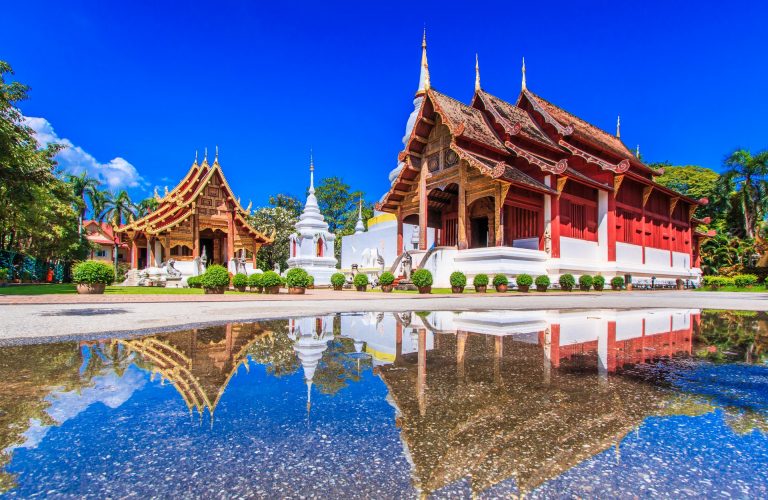
Chiang Mai
Old-town temples, the best of Thai crafts, cookery courses and fine restaurants – the north’s sophisticated capital is a great place to hang out. The capital and transport centre of the north, it’s also a great place just to hang out or prepare for a journey into the hills. For many tourists, this means joining a trek to visit one or more of the hill tribes, who comprise one-tenth of the north’s population.
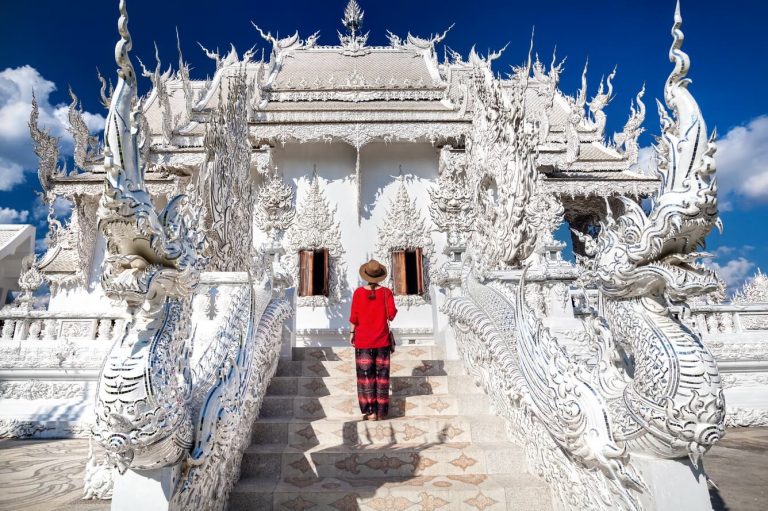
Chiang Rai
In the last few years Chiang Rai has acquired several genuine sights of interest, notably the Mae Fah Luang Art & Cultural Park, a beautiful storehouse of Lanna art. There’s now also a good choice of guesthouses and upmarket riverside hotels in which to lay your head, and from here you can set up a wide range of trekking, day-trips and other outdoor activities in the surrounding countryside.
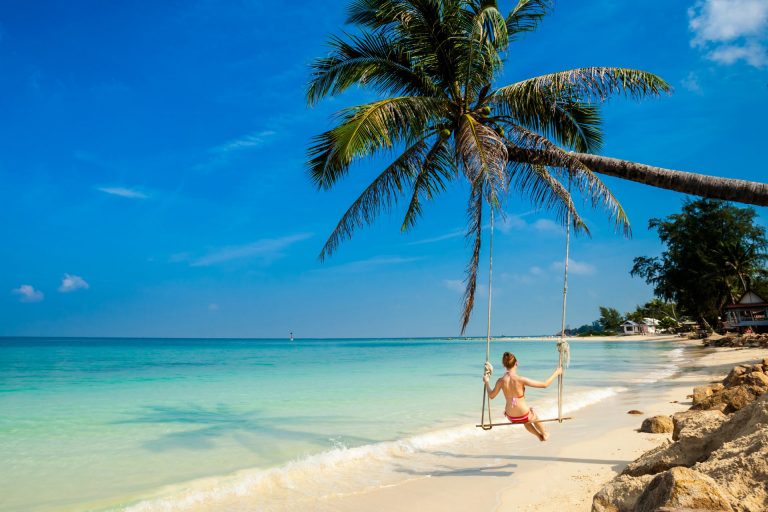
Ko Pha Ngan
In recent years, backpackers have tended to move over to Ko Samui’s fun-loving little sibling, which still has a comparatively simple atmosphere. The most popular activities on Ko Pha Ngan are round-island boat trips, from Hat Rin and Hat Yao, and trips to Ang Thong National Marine Park. Other activities include learning to cook Thai food, bicycle tours, yoga, meditation and kiteboarding.

Ko Lanta Yai
The “island of long beaches”, Ko Lanta has an atmospheric old town, offers an appealing choice of places to stay. There’s good snorkelling and diving nearby, plus caves to explore, kayaking and other water sports. The island is especially popular with families, in part because of the local laws that have so far prevented jet-skis, beachfront parasols and girlie bars from turning it into another Phuket, though resort facilities are expanding fast.
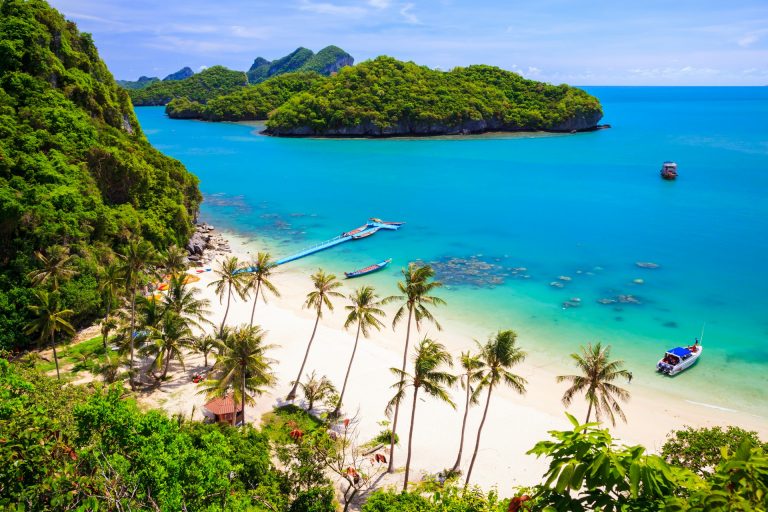
Ko Samui
Ko Samui is easily one of the most naturally beautiful Thai islands, with its long white-sand beaches and arching fringes of palm trees. Samui has over a dozen scuba-diving companies, offering trips for divers and snorkellers and courses throughout the year. Also on offer are plenty of spas, as well as meditation retreats, island tours, ziplines, kiteboarding and cooking classes.
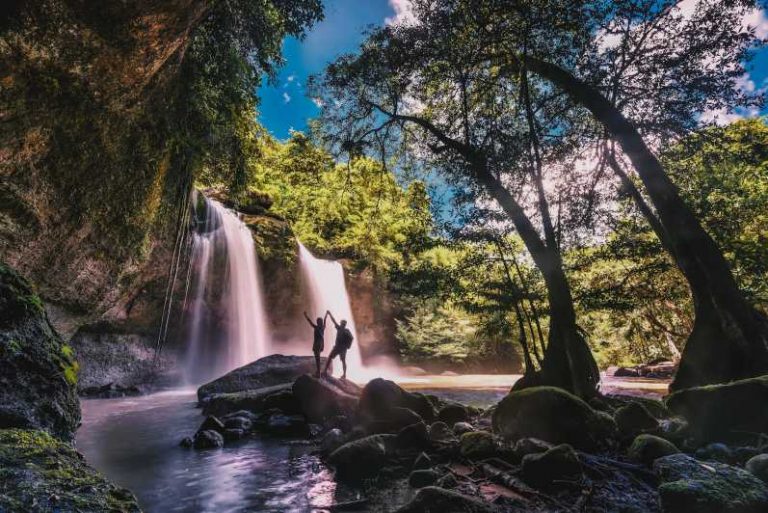
Khao Yai National Park
The stunning jungle-clad karsts of Khao Sok National Park are well worth heading inland for. Located about halfway between the southern peninsula’s two coasts and easily accessible from Khao Lak, Phuket and Surat Thani, the park has become a popular stop on the travellers’ route, offering a number of easy trails, a bit of amateur spelunking and some scenic rafthouse accommodation on Cheow Lan Lake.
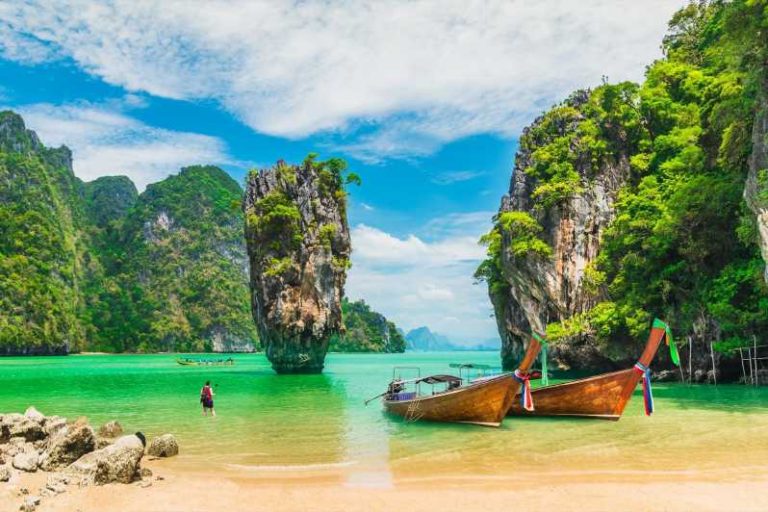
Ao Phang Nga
Protected from the ravages of the Andaman Sea by Phuket, Ao Phang Nga has a seascape both bizarre and beautiful. Covering some four hundred square kilometres of coast between Phuket and Krabi, the mangrove-edged bay is spiked with limestone karst formations up to 300m in height, jungle-clad and craggily profiled. This is Thailand’s own version of Vietnam’s world-famous Ha Long Bay, reminiscent too of Guilin’s scenery in China, and much of it is now preserved as national park.

Ko Yao Noi
Located in an idyllic spot in Phang Nga bay, almost equidistant from Phuket, Phang Nga and Krabi, the island of Ko Yao Noi enjoys magnificent maritime views from almost every angle and makes a refreshingly tranquil getaway. Measuring about 12km at its longest point, it’s home to some four thousand islanders, the vast majority of them Muslim, who earn their living from rubber and coconut plantations, fishing and shrimp-farming.
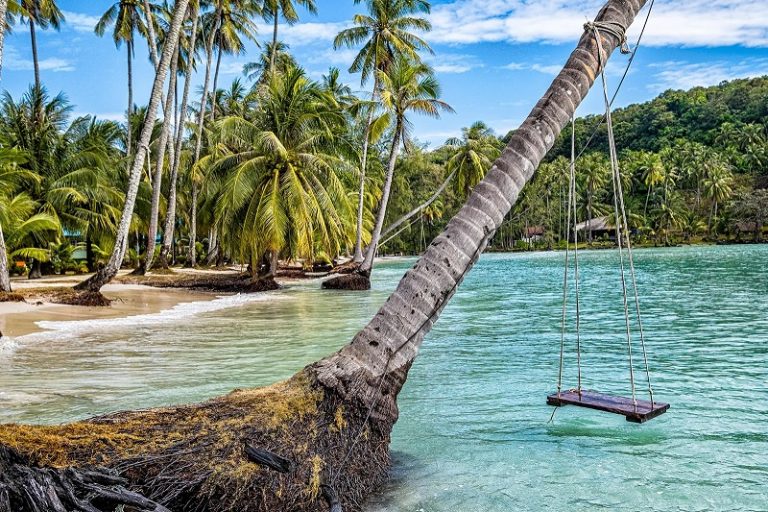
Ko Kood
The fourth-largest island in Thailand, forested Ko Kood (also spelt Ko Kut and Ko Kud) is still a wild and largely uncommercialised island. Though it’s known for its sparkling white sand and exceptionally clear turquoise water, particularly along the west coast, Ko Kood is as much a nature-lover’s destination as a beach-bum’s. Swathes of its shoreline are fringed by scrub and mangrove rather than broad sandy beaches, and those parts of the island not still covered in virgin tropical rainforest are filled with palm groves and rubber plantations.
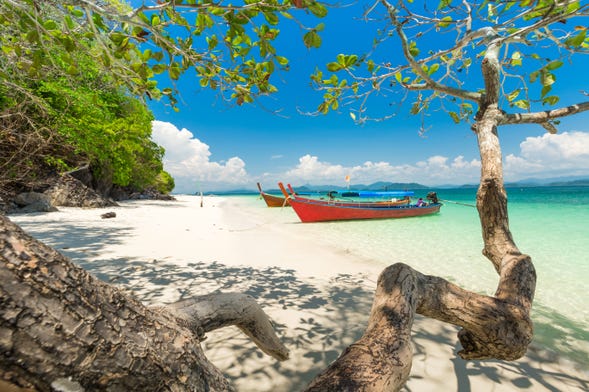
Ko Samet
Blessed with the softest, squeakiest sand within weekending distance of Bangkok, the tiny Thai island of Ko Samet, which measures just 6km from top to toe, is a favourite escape for Thais, expats and tourists. Its fourteen small but dazzlingly white beaches are breathtakingly beautiful, lapped by pale blue water and in places still shaded by coconut palms and occasional white-flowered cajeput (samet) trees, which gave the island its name and which are used to build boats.
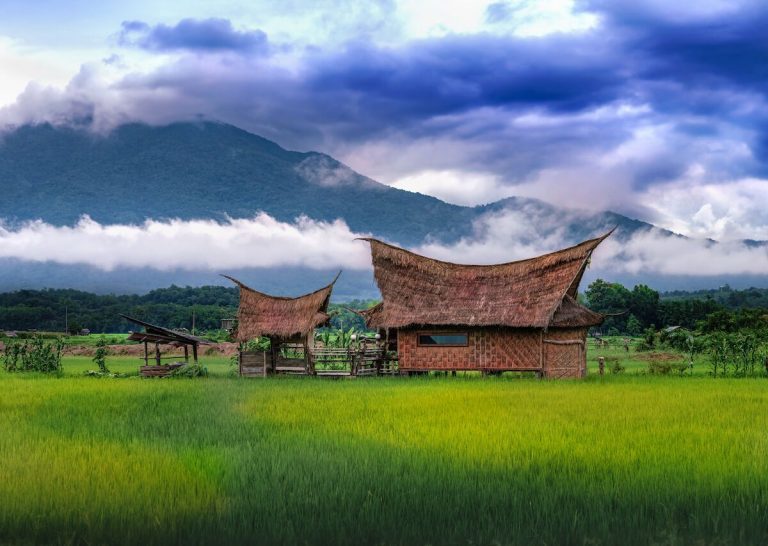
Nan
Ringed by high mountains, the small but prosperous provincial capital of Nan, 225km northeast of Lampang, rests on the grassy west bank of the river. Few Western visitors make it out this far, but it’s a likeable place with a thriving handicrafts tradition, a good museum and some superb temple murals at Wat Phumin, as well as at Wat Nong Bua out in the countryside. The town comes alive for the Lanna boat races, usually held in late October or early November.
For the simplest double room while travelling in Thailand, prices start at a bargain B150 in the outlying regions, around B200 in Bangkok, and B400 in the pricier resorts. Tourist centres invariably offer a tempting range of more upmarket choices but in these areas rates fluctuate according to demand.
Most of Thailand’s budget accommodation is in guesthouses and bungalows. These are small, traveller-friendly hotels whose services nearly always include an inexpensive restaurant, wi-fi and safe storage for valuables and left luggage, and often a tour desk.
Thailand travel sales reps and other people travelling for business rather than pleasure rarely use guest-houses, opting instead for budget hotels, which offer rooms for around B150–600. Usually run by Chinese-Thais, these functional three- or four-storey places are found in every sizeable town, often near the bus station or central market.
The rest of the accommodation picture is all about tourist hotels, which, like anywhere in the world, come in all sizes and qualities and are often best booked via online discount accommodation booking services such as local outfit sawadee.com. One way or another, it’s a good idea to reserve ahead in popular tourist areas during peak season.
As guesthouses have become increasingly hotel-like and commercial in their facilities and approach, many tourists looking for old-style local hospitality are choosing homestay accommodation instead. Homestays give an unparalleled insight into typical Thai (usually rural) life and can often be incorporated into a programme that includes experiencing village activities.
Thai food is one of the biggest reasons for the country’s popularity with tourists. Bangkok and Chiang Mai are the country’s big culinary centres, offering the cream of gourmet Thai restaurants and the best international cuisines. The rest of the country is by no means a gastronomic wasteland, however, and you can eat well and cheaply in even the smallest provincial towns, many of which offer the additional attraction of regional specialities.
In fact, visit Thailand and you’ll find that you could eat more than adequately without ever entering a restaurant, as itinerant food vendors hawking hot and cold snacks materialise in even the most remote spots, as well as on trains and buses – and night markets often serve customers from dusk till dawn.
Hygiene is a consideration when eating anywhere in Thailand, but being too cautious means you’ll end up spending a lot of money and missing out on some real local treats. Wean your stomach gently by avoiding excessive amounts of chillies and too much fresh fruit in the first few days.
You can be pretty sure that any noodle stall or curry shop that’s permanently packed with customers is a safe bet. Furthermore, because most Thai dishes can be cooked in under five minutes, you’ll rarely have to contend with stuff that’s been left to smoulder and stew.
Many travellers’ itineraries take in a few days’ trekking in the hills and a stint snorkelling or diving off the beaches of the south. Trekking is concentrated in the north, but there are smaller, less touristy trekking operations in Kanchanaburi, Sangkhlaburi and Umphang. There are also plenty of national parks to explore and opportunities for rock climbing and kayaking.
Diving in Thailand
Clear, warm waters (averaging 28°C), prolific marine life and affordable prices make Thailand a very rewarding place for diving and snorkelling.
Most islands and beach resorts have at least one dive centre that organises trips. Thailand’s premier diving destinations are generally considered to be Ko Similan, Ko Surin, Richelieu Rock and Hin Muang and Hin Daeng – all of them off the Andaman coast.
Thailand’s main dive resorts
- Ko Chang
- Pattaya
- Ko Pha Ngan
- Ko Samui
- Ko Tao
- Ao Nang
- Khao Lak
- Ko Lanta
- Ko Phi Phi
- Phuket
- Ko Lipe
Snorkeling in Thailand
Boatmen and tour agents on most beaches offer snorkelling trips to nearby reefs and many dive operators welcome snorkelers to tag along for discounts of thirty percent or more; not all diving destinations are rewarding for snorkelers though, so check the relevant account in this book first.
Trekking in Thailand
Trekking in the mountains of north Thailand differs from trekking in most other parts of the world in that the emphasis is not primarily on the scenery but on the region’s inhabitants. While some of the villages are near enough to a main road to be reached on a day-trip from a major town, to get to the other, more traditional villages usually entails joining a guided party for a few days.
For most visitors, however, these hardships are outweighed by the experience of encountering people of such different cultures, travelling through tropical countryside. Here’s our take on some of Thailand’s best trekking routes.
Rock climbing
The limestone karsts that pepper southern Thailand’s Andaman coast make ideal playgrounds for rock-climbers, and the sport has really taken off here in the past fifteen years. Most climbing is centred round East Railay and Ton Sai beaches on Laem Phra Nang in Krabi province, where there are dozens of routes within easy walking distance of tourist bungalows, restaurants and beaches.
Sea kayaking and whitewater rafting
Sea kayaking is also centred around Thailand’s Andaman coast, where the limestone outcrops, sea caves, hongs (hidden lagoons), mangrove swamps and picturesque shorelines of Ao Phang Nga in particular make for rewarding paddling.
Entertainment and sport in Thailand
Bangkok is the best place to catch authentic performances of classical Thai dance, though more easily digestible tourist-oriented shows are staged in some of the big tourist centres as well as in Bangkok. The country’s two main Thai boxing stadia are also in the capital, but you’ll come across local matches in the provinces too.
Spas and traditional massage in Thailand
With their focus on indulgent self-pampering, spas are usually associated with high-spending tourists, but the treatments on offer at Thailand’s five-star hotels are often little different from those used by traditional medical practitioners, who have long held that massage and herbs are the best way to restore physical and mental well-being.
Thai massage (nuad boran) is based on the principle that many physical and emotional problems are caused by the blocking of vital energy channels within the body.
Ang Thong
Spectacular archipelago in the Gulf of Thailand, generally visited on a day-trip from Ko Samui or Ko Pha Ngan.
Doi Inthanon
Waterfalls, hill tribes, orchids, around four hundred bird species and the country’s highest peak.
Erawan
An exceptionally pretty, seven-tiered waterfall that extends deep into the forest. Hugely popular as a day-trip from Kanchanaburi.
Khao Sam Roi Yot
Coastal flats on the Gulf coast known for their rich birdlife plus an extensive stalactite-filled cave system.
Khao Sok
Southern Thailand’s most visited park has rainforest trails and caves plus a flooded river system with eerie outcrops and raft-house accommodation.
Khao Yai
Thailand’s most popular national park, three hours from Bangkok, features half a dozen upland trails plus organized treks and night safaris.
Ko Similan
Remote group of Andaman Sea islands with famously fabulous reefs and fine above-water scenery. Mostly visited by dive boat but limited national park accommodation is provided.
Ko Surin
National marine park archipelago of beautiful coastal waters in the Andaman Sea, though much of its coral became severely bleached in 2010. Good snorkelling and national park campsites.
Ko Tarutao
Beautiful and wildly varied land- and seascapes on the main 26km-long island and fifty other smaller islands on its western side.
Phu Kradung
Dramatic and strange 1300m-high plateau, probably best avoided at weekends.
Nearly all Thai festivals have a religious aspect. The most theatrical are generally Brahmin (Hindu) in origin, honouring elemental spirits and deities with ancient rites and ceremonial costumed parades.
Buddhist celebrations usually revolve round the local temple, and while merit-making is a significant feature, a light-hearted atmosphere prevails, as the wat grounds are swamped with food and trinket vendors and makeshift stages are set up to show likay folk theatre, singing stars and beauty contests.
Many of the secular festivals (like the elephant roundups and the Bridge over the River Kwai spectacle) are outdoor local culture shows, geared specifically towards Thai and farang tourists.
Visiting Thailand for most Western passport holders (that includes citizens of the UK, Ireland, the US, Canada, Australia, New Zealand and South Africa) is simple as they’re allowed to enter the country for short stays without having to apply for a visa.
Visa requirements for extended trips in Thailand are subject to frequent change, so you should always consult before departure a Thai embassy or consulate, a reliable travel agent, or the Thai Ministry of Foreign Affairs’ website at wmfa.go.th.
CAPITAL
Bangkok
Population
Over 67mil
curency
Baht (THB)
BIGGEST CITY
Bangkok
LANGUAGE
Thai
best time to travel
Nov - Apr
Lastest News
Plan Your Trip!
Let us transform your dreams into the ultimate vacation experience. Our consultation and itinerary design services are complimentary until you are completely satisfied with the proposed program. We design; you decide.



